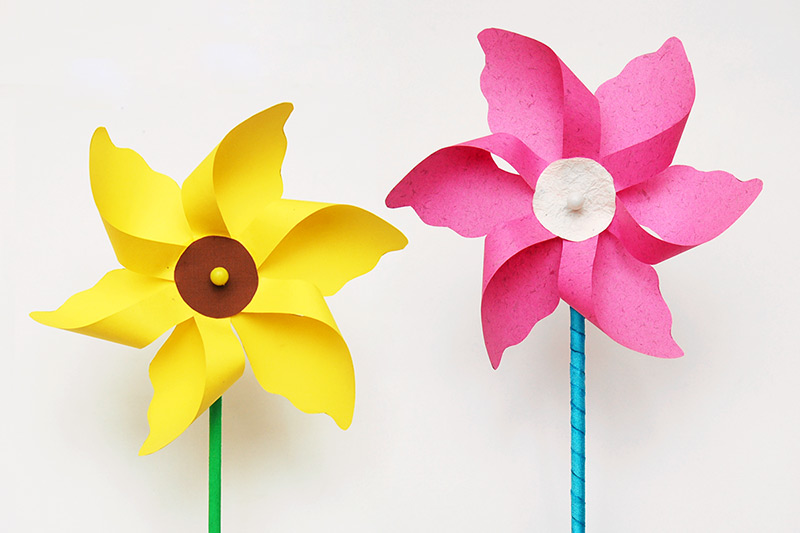
There are many ways you can recycle crafts. Newspapers and magazines can be used to make many different projects. You can also use your old toys and clothes to make DIY projects. Many thrift stores and local businesses sell recycled materials. Make sure to check the label to ensure it is recyclable.
Recycling
Craft recycling allows you to recycle old items and make new ones. This creative process can be used on both small and large scales. Recycling old sweaters, jeans or produce bags is possible. Even coffee filters can be upcycled into useful craft items.

Ideas for recycling crafts
Recycling is a great way to reduce waste, and there are many ways to use it in crafts. Some of the materials you can use include cardboard, paper, plastic, aluminum, glass, and tin cans. These materials can also be used to make many crafts, such as paper-mache potters.
Recycling methods
When crafting, using recycled materials is a great idea. To make recycled crafting materials, you can use old jeans and sweaters, as well as coffee filters, tea bags and mesh produce bags. These materials can be repurposed for several craft projects, and each one will help the environment.
Trash to treasure crafts
My favorite hobby is upcycling junk and making it valuable. There's nothing better than turning a useless object into something useful. Some of the projects below started as literal trash and were rescued from donation bins or thrift stores.
How to recycle newspaper
There are many ways newspapers can be recycled, from craft materials to paper. Because they don’t leave any lint, you can use them to wrap gifts. You can even crumple a few newspapers and use them to clean windows and other surfaces. The crumpled newspapers work well with a solution of water and vinegar or your favorite glass cleaner. Newspaper is great for protecting surfaces from painting spillages. It also works well as a protective lining for hamster cages. You won't need to replace the lining often.

Recycling tee shirt shirts
There are many options to recycle your tee shirts. Some companies have special programs that recycle certain types or clothing. These programs provide discounts and can take back certain types. Other programs allow you to recycle your shirts and use them in craft projects.
FAQ
What are the competitive hobbies?
Competitive sports include running, swimming, cycling, golfing, tennis, etc.
They're usually played by people who enjoy physical activity but also provide an opportunity for social interaction.
If your hobby is physical activity, chances are that others share it.
You might consider joining a group or club that meets regularly to play together in sports.
You might also choose to participate in team games involving playing alongside others.
These include soccer (soccer), rugby, netball and hockey.
There are many kinds of competition.
Some competitions are only for recreational purposes.
Others are meant to test competitors' skills.
Some are even designed to reward outstanding performance.
These cases award prizes to the winners.
Other competitions are designed to test the strength and stamina of competitors.
These are endurance events.
For example, marathon races, triathlons, Ironman Triathlon, etc.
Before competing in these events, athletes train hard.
They will be required to follow a rigorous training program in order to prepare mentally and physically.
They might need to travel some distance during preparation.
It is important to keep in mind that not all athletes can compete in every event.
Why do we need hobbies?
Hobbies are an integral part of our daily lives. They allow us to relax, unwind and think creatively. We also have the chance to learn new skills and pursue lifelong passions.
Hobbies can help us find meaning and purpose.
These can often be a great way to get some extra time while you have nothing else.
And they're fun!
If you don't find time for hobbies, it's likely that you don't have enough time for any other activities.
So take a look at all the options available to you. You might consider starting a hobby if you don't already have one.
Can I make a living from my hobby and earn money?
Many hobbies can lead to making extra cash.
If your hobby is something you love, you might decide to make a living selling it.
For example, if you collect stamps, you may want to set up a website selling rare stamps.
This way, you can earn extra income without having to go through the hassle of actually buying and selling the stamps.
Another option is to create a YouTube Channel where you can talk about your hobby.
This allows you to share your passion with others and potentially generate additional revenue by offering premium content.
How do I start my new hobby?
To start a new hobby, you must first decide what type of activity you would like to do.
Once you have decided on your subject, passion is the key.
Understanding why you are interested in a hobby is important. This will help you find direction and a purpose.
After you have decided on the type of hobby you want to pursue, it's time to start planning.
Consider the equipment that you will need.
You should consider whether or not you will need to take classes or attend seminars.
Make sure that you have enough space in your home for your hobby.
A club or group might be something you consider. These groups are often supportive and offer advice.
Think about how much you'd need to spend on your hobby.
How can I find a hobby for myself?
It can feel overwhelming to start your search for a hobby when you first begin.
You may be thinking, "I'm just not artistic" or "I hate sports," or perhaps "I don’t even know what I know."
However, it is likely that you already have a lot to draw on when searching for a hobby.
It's simply that you haven’t yet realized it.
Take a good look at what you have in your house. How much stuff do you own?
Are there any toys that you don't use anymore?
Perhaps you own a collection or magazines.
You might have always wanted the ability to cook.
Perhaps you just want to pick up the guitar again.
Whatever it is, there's likely something you can turn into a hobby.
The key is to realize that you already have plenty of experiences to draw upon.
And once you do, you'll be able to pick out a hobby that fits right into your lifestyle.
What are your favorite hobbies right now
Popularity isn't always a good thing. Popularity is often used to excuse mediocrity. Many people have no time for hobbies or other interests. They're too busy working to make ends met. What do you do with your spare time? You could start a business.
This isn’t easy. There are many obstacles that must be overcome before you can realize your vision.
So if you're looking for something more exciting than running a business, you should consider pursuing a hobby.
Hobbies can be more than just creative pursuits. There are many hobbies. These hobbies include:
-
Gardening
-
Cooking
-
Photography
-
Reading
Statistics
- In comparison, men in the “no humor” condition were refused 84.6% of the time and were only accepted 15.4% of the time. (time.com)
- Much of this decline reflects the fact that teens are less likely to work today than in the past; among employed teens, the amount of time spent working is not much different now than it was around 2005. (pewresearch.org)
- I am 100% biologically a woman (discover.hubpages.com)
- Almost 80% of people claim to have no hobby. (hobbylark.com)
- Studies show that just six minutes of reading can reduce stress levels by 60 percent. (oberlo.com)
External Links
How To
How to begin gardening
Gardening is one form of agriculture that dates back to the beginning. It requires persistence, patience, and determination. The first step to starting a garden is to pick a spot where you will grow food. This could be a large plot of land or even just a small area in your backyard. Next, choose what kind of plants you would like to grow. Do you prefer flowers or vegetables? Some people love to grow herbs, while others enjoy raising animals like rabbits. You should consider how much space you have available before deciding what types of crops you plan to plant. If you live in a region that experiences cold winters then it is possible to grow fruits and berries.
Once you have made your choice, it is time to prepare the soil. Soil is essential in determining whether your plants will thrive or fail. Good quality soil contains organic matter that helps feed your plants' roots. Organic matter is made up of leaves, twigs grass clippings, manure and compost. Once your soil is prepared, it's time to add nutrients. The type of plant you intend to grow will dictate the amount of nutrients you need. Online fertilizer calculators can be used to determine these values. Many fertilizers are on offer, so make sure that you know which one you are buying.
After you have prepared your soil, and added the correct nutrients, you will need to wait until your seed germinates. This process usually takes anywhere from 2 weeks to 3 months, depending on the weather and the temperature in your area. After seeds have sprouted, water them every day. Overwatering your plants can lead to problems. Avoid overwatering your plants. Overwatering could lead to root rot as well as fungal diseases. Keep in mind that plants are more thirsty during summer than winter. Also, remember that certain plants need to dry out after watered. Tomatoes, for example, need to be kept moist but not too wet. They don't like to sit in soggy soil. After the plants have finished flowering they must go dormant. Dormancy is when plants stop producing new growth and begin storing energy for the next season's harvest. During dormancy, the plant stops sending signals to its roots telling them to produce food. During this period, plants continue to store energy. However, if the temperatures drop below freezing and there isn't enough sunlight, the plant will go to sleep.
If you live in an urban environment, you may find yourself limited in the kinds of plants that you can grow. Urban areas tend to contain concrete sidewalks, roads, buildings, and parking lots that block sunlight from reaching the ground. Concrete absorbs light which blocks sunlight from reaching the ground below. Many plants can't thrive in urban environments because they lack sunlight. There are still plants that thrive in urban environments. Many perennials, trees, and shrubs are able to adapt to urban living. Many annuals can also grow indoors in pots. You can grow fresh greenery year-round in containers.
You are now ready for planting!